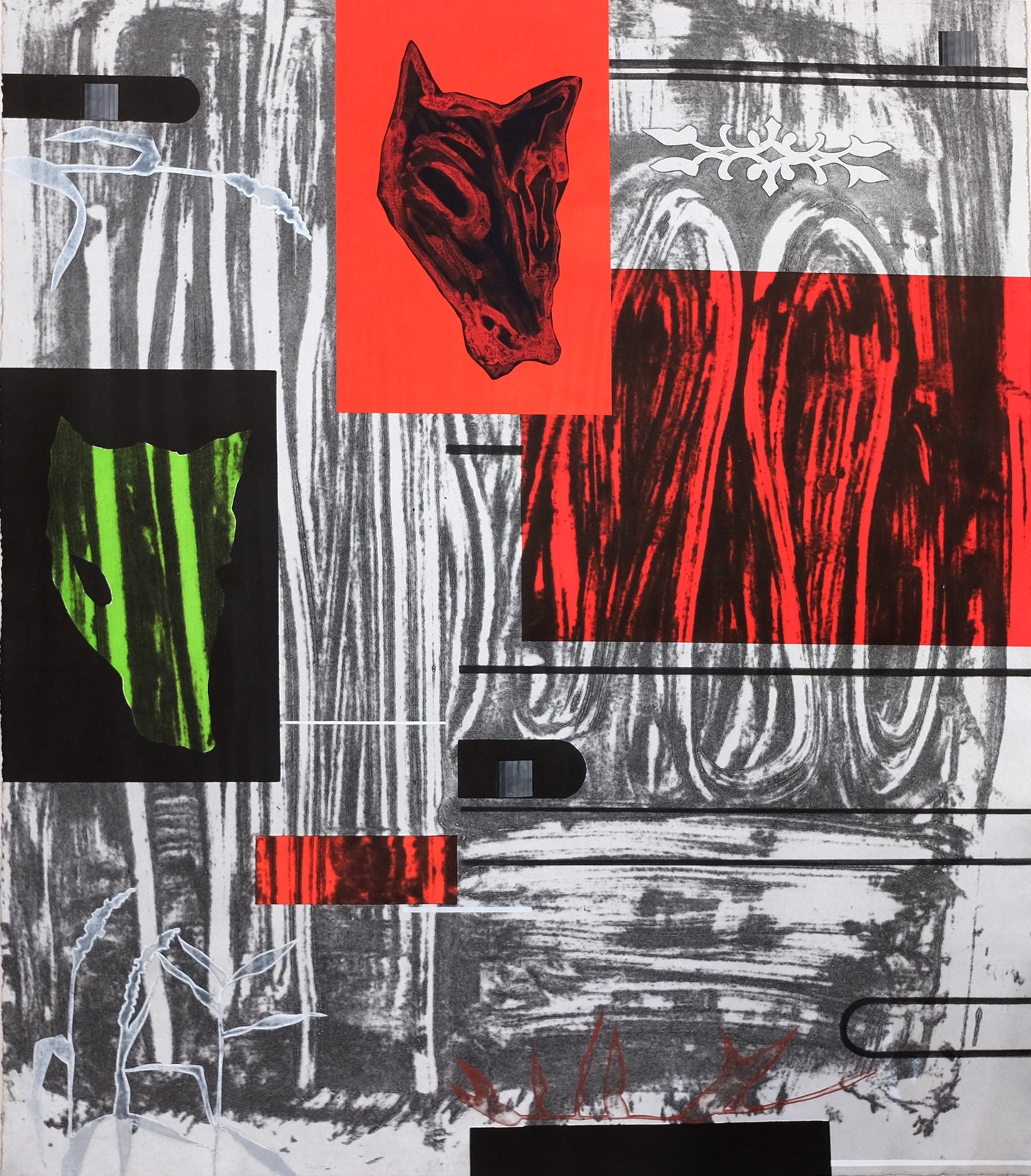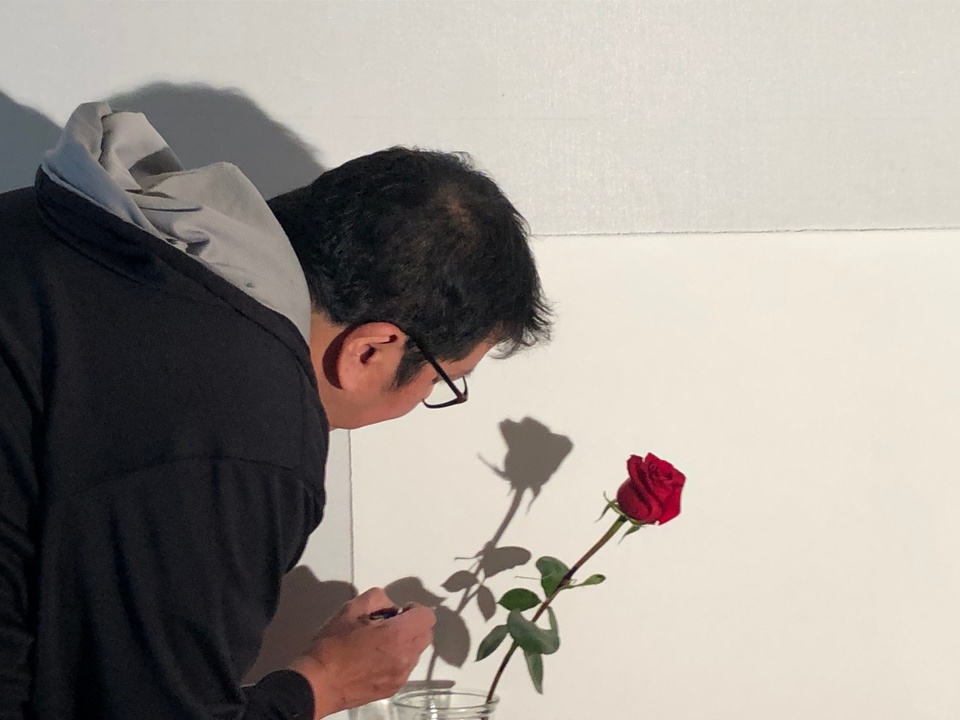Duane Slick
Crafting a Consequential Narrative
Duane Slick visited Island Press in the fall of 2019 as the Arthur and Sheila Prensky visiting artist. He created a multi-layered collagraph, Crafting a Consequential Narrative that includes the artist’s signature leitmotif: a coyote head. Slick’s imagery is rooted in his Woodlands identity—specifically, Meskwaki/Ho-Chunk.
The edition of 16 was completed in September 2020, seven months into the global pandemic coupled with much social and political strain. The title Crafting a Consequential Narrative refers to the uncontrollability of our current situations.
Duane Slick’s imagery is rooted in his Woodlands identity—specifically, Meskwaki/Ho-Chunk. Dozens of Algonquin- and Iroquoian-speaking nations inhabited the Woodlands area in what is today the Eastern United States and Southern Canada, including the Cahokia Mounds across the Mississippi River from St. Louis where this work was made. Though displaced, Native Americans remain a vital presence globally. In his studio practice Slick works through philosophical and metaphysical questions in defiance of observable phenomena.
Duane Slick visited Island Press in the fall of 2019 as the Arthur and Sheila Prensky visiting artist to create a multi-layered collagraph. Crafting a Consequential Narrative developed intuitively and in collaboration with Master Printer Tom Reed. It includes the artist’s signature leitmotif: a coyote head. At the top, a bright red rectangle screenprinted on Okawara frames one coyote portrait. Another coyote on the left appears to have a radioactive green glow. Coyote is a trickster character in many Native oral traditions. Of this symbol Slick explains how in depicting coyote’s shadow, he returns metaphysical autonomy to a folk art object drained of its original intention through capitalism.
The artist worked with a black and white palette for many years before choosing to introduce limited, symbolic colors of red and green. Together these four are the colors worn by Woodlands tribal dancers. Dynamic swirls of carborundum suggest woodgrain pattern. Snippets of foxtail grass lie around the periphery. The subtle contours of these stalks almost hide within a dense ecosystem. Further breaking up the space, several black bars of varying width relate to Slick’s current paintings. Within two of these the artist painted a grayscale gradation in acrylic. This collage aesthetic is reminiscent of Robert Rauschenberg as well as George Longfish (Tuscarora), who mentored Slick in graduate school at the University of California–Davis, and Jaune Quick-To-See Smith (Salish/Métis/Cree/Shoshone-Bannock), whom the artist greatly admires. In this way he weaves together various threads of contemporary American art.
The edition of 16 was completed in September 2020, seven months into the global pandemic coupled with much social and political strain. The title Crafting a Consequential Narrative refers to the uncontrollability of our current situations. New challenges also bring new perspectives to the past, and global events changed the way the artist thought about this work. For instance, foxtail grass spreads easily and is difficult to control—an apt metaphor for disease and disinformation.
[PROOF essay about this project by Andrea L. Ferber. Download brochure with essay by clicking the link to the left.]













